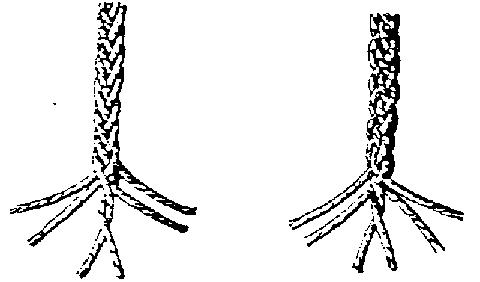|
Hems
Hems appear to be minimal in size, mostly around 1 cm. Both gowns and hoods were finished through folding over the edge of the fabric, and held down with a double row of short stitches. The edge was then overcast. Sometimes the hem is turned over and the raw edge left without edge treatment. A common edge treatment is also to do rows of 'prick stitch', which looks like a back stitch or a modern machine stitch, in that each stitch comes right up to the next on both sides, but it's actually done as a running stitch.
|
According to Norlund, an edge treatment relatively common is to edge it with a narrow cord, plaited from six strands of wool thread, or a simple 2-ply cord sewn on with an overcast stitch or a darning stitch. One garment was trimmed with cord and then turned over. However, later research suggests that these are in fact tablet woven just like the London examples.

|
|
|
|
hem stitch (single folded hem) |
running stitch |
|
|
|
|
top stitch |
hem stitch (double folded hem) |
|
|
|
|
Rolled hem |
Neck facing (narrow silk strip on the straight grain) |
|
|
|
|
edging finished with narrow tabletwoven braid |